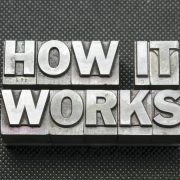The Top Myths about Tax Liens in a Self-Directed IRA
With a Self-Directed IRA, one of the assets you can potentially look to for retirement wealth is that of tax liens. But not a lot of people are experienced with tax liens. They’re not sure how they work, and if they know how they work, they may have heard some myths about how they might function within a Self-Directed IRA. Let’s cut through the myths and explore what it really means to invest in tax liens as part of your retirement portfolio:
Myth #1: Tax Lien Investing is Taking Advantage of Other People
When a tax lien has been placed on a property, it’s because someone is going through some serious financial trouble. There’s no disputing that. But when you as an investor come in and purchase the tax lien, it’s not because you’re looking to make that trouble worse. The tax lien is already there! You’re simply assuming ownership of the lien.
If a tax collector is already going to take in profits on a property anyway, those profits might suit you better when they go in the direction of your Self-Directed IRA.
Myth #2: Tax Lien Investing is Too Hard To Understand
Investing in anything with “tax” in its name can be intimidating. Many people assume they don’t understand it, or—even worse—that they couldn’t understand it. But anyone who’s invested in tax liens knows that the concept is deceptively simple.
How does it work? When a property owner is not able to make the tax payments on the property, the local government—typically a city or county government—places a lien on this property. This lien then means that the property is essentially locked down, with the owner unable to sell it or refinance on the property, until the taxes are paid.
These tax liens can be put into certificate form, at which point they’re sold to the highest bidder at an auction. That’s where the investor comes in, paying off the amount of the lien to assume it. To eliminate the lien, the property owner then has to pay the tax lien holder—the Self-Directed IRA investor—to avoid eviction.
Myth #3: Tax Lien Investing Doesn’t Generate Returns
Let’s piggy-back off of what we just read in the previous section. In that section, you discovered how tax liens work. When a property owner pays back the taxes—which are now owed to the individual holding the tax lien—it often comes at high interest rates. If the property owner is not able to make the payments, it may be possible (through foreclosure) that the investor then takes ownership of the property. This can generate substantial returns in a portfolio, even with a relatively small upfront investment.
Myth #4: You Can’t Use Tax Liens in a Retirement Account
Think again! Using a Self-Directed IRA, you’ll open up your portfolio to a wide range of potential retirement investments. Tax liens are just one of them. In a Self-Directed IRA, you can add real estate, precious metals, tax liens, private notes, and more to your retirement funds, creating a wide-spanning portfolio that is diversified across asset classes. It’s even possible to run a more traditional arrangement with a brokerage account. But it’s important to understand what self-direction is—and why it might work for you—before moving forward.
Interested in learning more about Self-Directed IRAs? Contact American IRA, LLC at 866-7500-IRA (472) for a free consultation. Download our free guides or visit us online at www.AmericanIRA.com.





